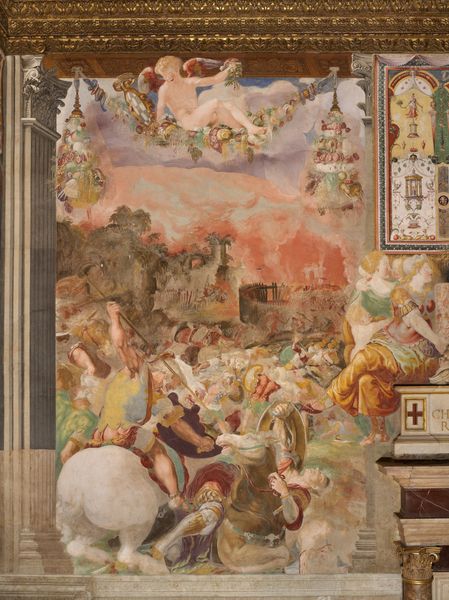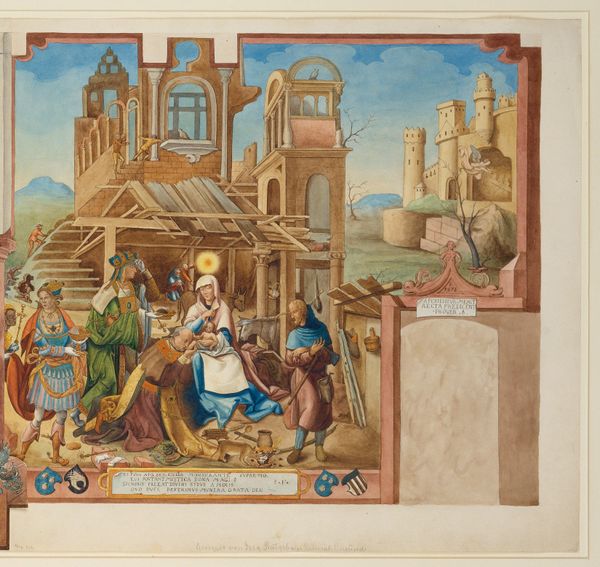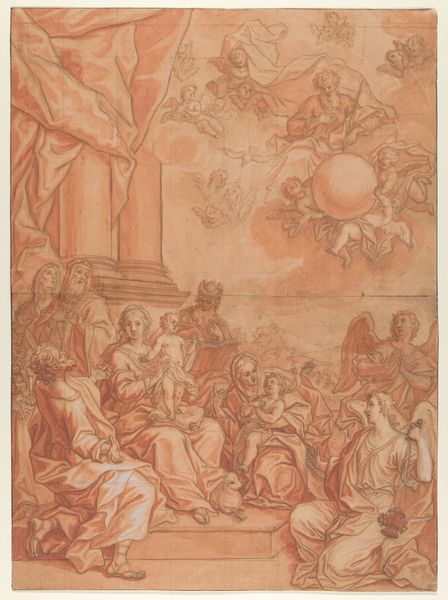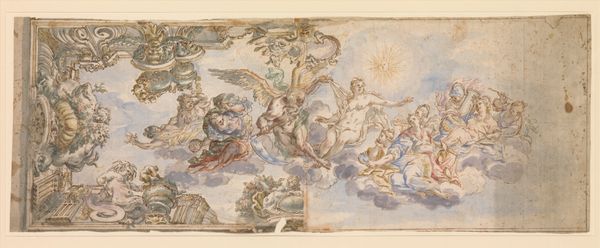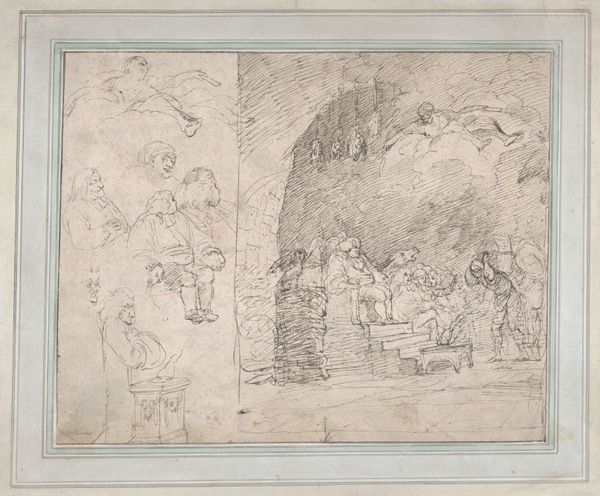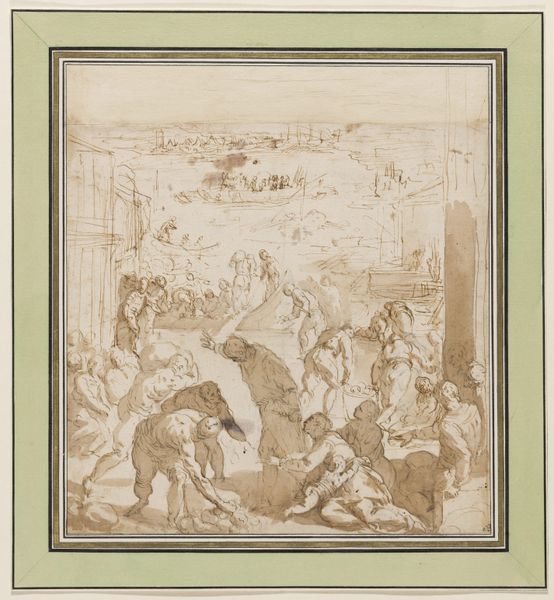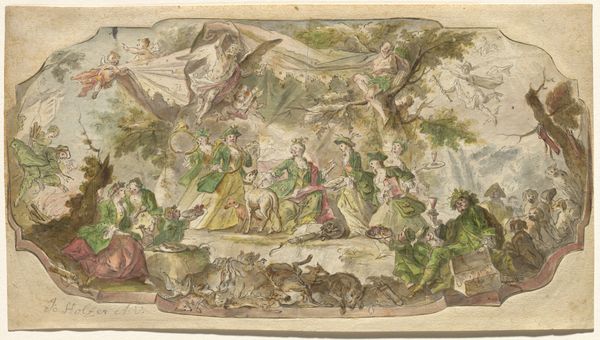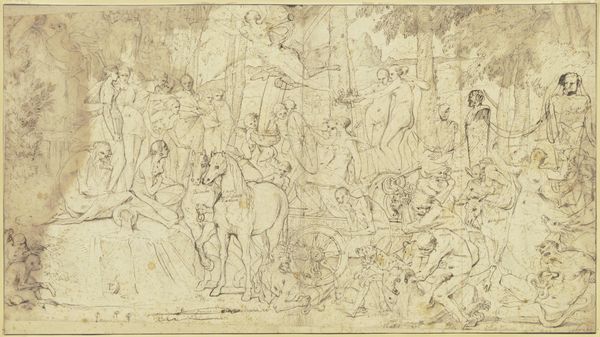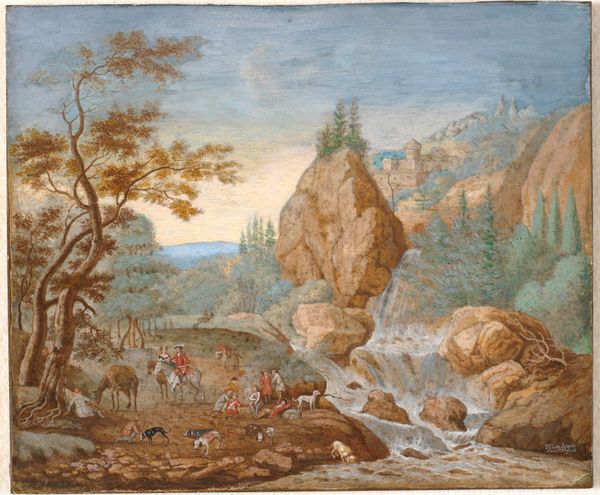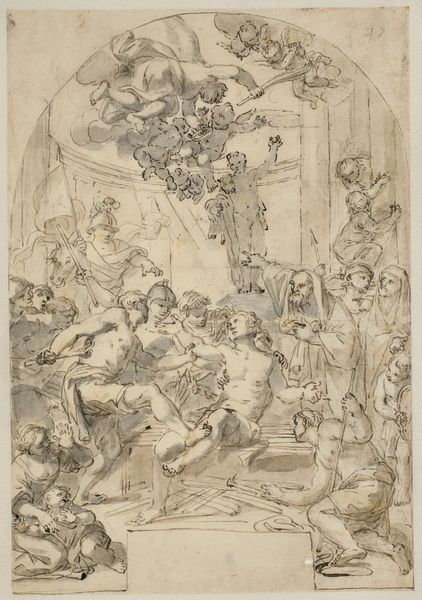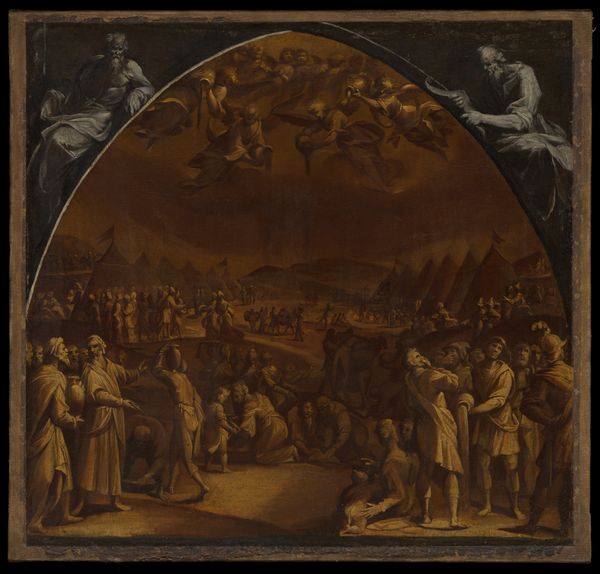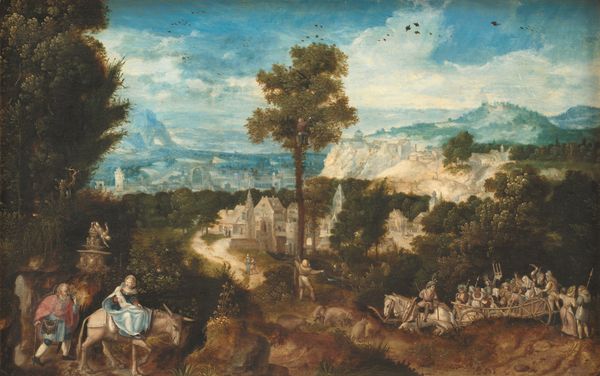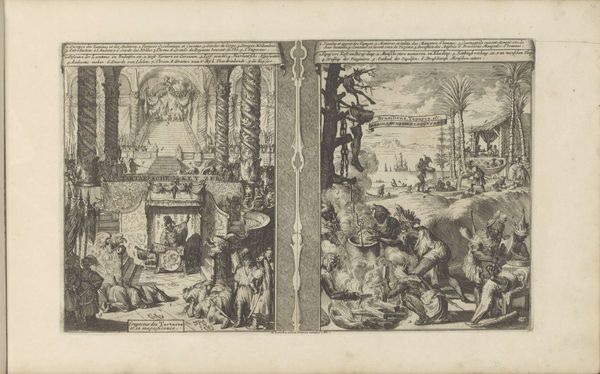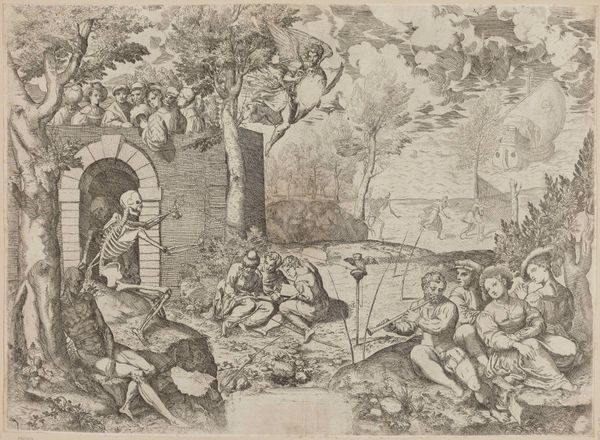
drawing, watercolor
#
drawing
#
medieval
#
water colours
#
narrative-art
#
landscape
#
figuration
#
oil painting
#
watercolor
#
german
#
history-painting
#
italian-renaissance
#
watercolor
Copyright: Public Domain
Curator: Here we have Christian Becker's watercolor drawing, "Adoration of the Magi," created sometime after 1850. It's currently held in the Städel Museum collection. What strikes you first about it? Editor: Overwhelming! It's a bit chaotic, almost dreamlike in its sprawling composition. It feels like Becker crammed so many details into this piece, but I appreciate the jewel-like quality of the watercolors. It's both detailed and ephemeral. Curator: Absolutely, there's a fascinating density to it. Becker harkens back to Medieval and Italian Renaissance styles here. What do you make of that? Editor: The revival feels deliberate, doesn’t it? The return to such distinct stylistic references might reflect the period’s fascination with history and its impulse to reimagine past narratives, imbuing it perhaps with new meaning or commenting on social changes. Curator: Perhaps Becker was drawn to the rich symbolism inherent in these styles, especially considering the religious subject matter? The magi's adoration is such a potent symbol of cultural exchange and recognition. Editor: Exactly. Think of the Magi as representatives of different cultures and classes coming together, bearing gifts that challenge worldly power. That scene speaks volumes about hierarchy, and even today invites reflections about who we choose to celebrate, who we deem worthy of respect, and which voices dominate. The placement of figures, the expressions he chooses for some and not others—Becker's choices say something powerful. Curator: It’s incredible to me how a piece inspired by older movements continues to invite these multilayered perspectives. Looking closer, you also see echoes of history paintings... Editor: True. Even the landscape is purposeful. Becker blurs lines, merging traditions to comment on society. It suggests how we’re constantly reinterpreting the past to suit current dialogues, shifting power structures, and evolving value systems. Curator: This makes the piece a fascinating lens to reflect on our world and the stories we tell about ourselves and each other. Editor: Definitely. Becker’s work reminds us that historical art isn’t static. It's a reflection—or rather, refraction—of culture that morphs through new ways of seeing.
Comments
No comments
Be the first to comment and join the conversation on the ultimate creative platform.
